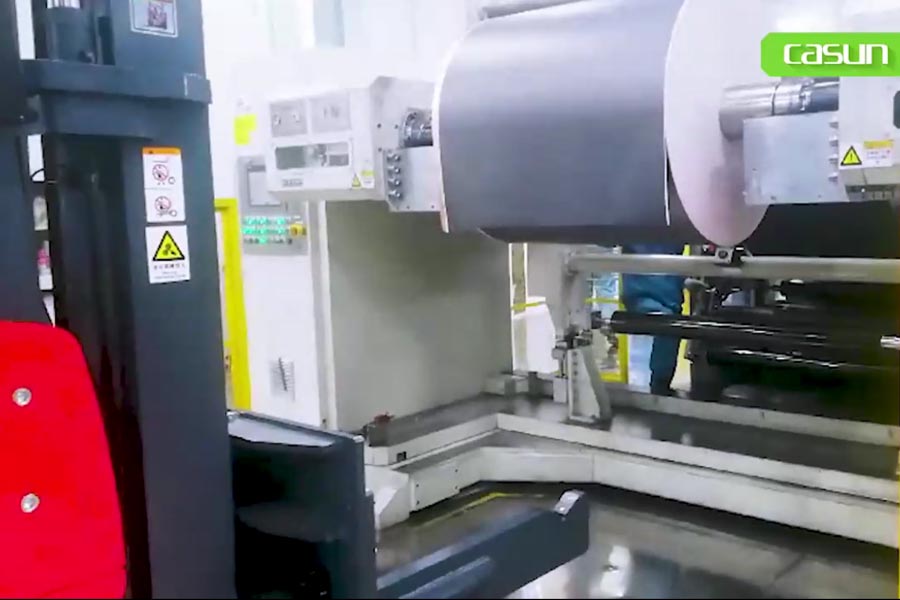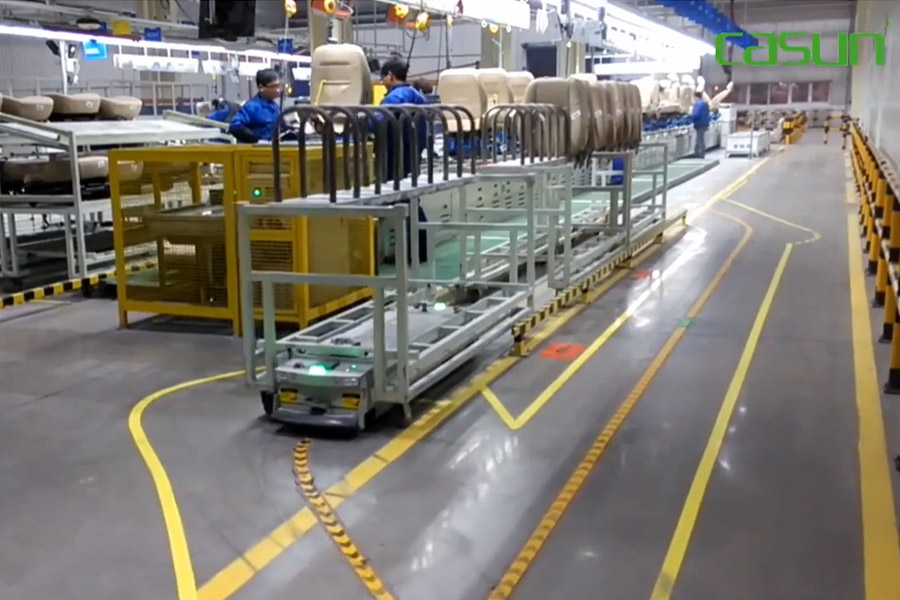The global power battery is starting a new round of capacity expansion, accelerating the development of power battery manufacturing towards large-scale, automated and intelligent trends. In addition to the automation of the production line, the application of AGV in the logistics system has also become a symbol of the modern smart factory of power batteries. one of the sexual configurations.
The connection between power battery manufacturing processes is becoming more and more flexible, and the connection between production line and warehousing is becoming more and more close, especially the connection of equipment, network, data, etc., as an important carrier for seamless connection between processes, power Battery companies have also put forward higher requirements for AGV systems.
The previous article introduced the process links of AGV/AMR that may be used in the power battery industry process. This article mainly introduces the problems in the specific application of AGV/AMR in the front-end process of power battery production and the smart logistics solution for the front-end process.
Contents
Introduction to the front-end process of the power battery
The front part of the cell mainly involves the production of electrodes, which includes four steps: stirring, coating, rolling and cutting.
The previous process mainly includes slurry stirring, positive and negative electrode coating, rolling, slitting, pole piece making and die cutting.
- Stirring: First use a lithium battery vacuum mixer, under the action of a special solvent and a binder, mix the powdered positive and negative active materials, and after high-speed stirring evenly, make a slurry of positive and negative materials without bubbles.
- Coating: The prepared slurry is evenly coated on the surface of the metal foil and dried to form positive and negative pole pieces respectively.
- Rolling: The roller press extrudes the coated surface of the pole piece through the pressure generated by the opposite operation of the upper and lower rolls, and the pole piece is changed from the original fluffy state to a dense state pole piece under the action of high pressure. is obviously quite critical.
- Slitting: Cut the rolled electrode strip into the length and width required for assembling the battery according to different battery models, and it is required that there will be no burrs during cutting.
In the entire power battery production, the front-end process is very important, accounting for more than 40% of the entire production process. In the power battery production with a high degree of automation, the unpacking, handling, coil change and line-side transfer of incoming materials in the previous process China will highlight the flexible and efficient value of AGV/AMR.
Difficulties in the intelligentization of the front-end process of the power battery
However, the connection between the power battery manufacturing processes is becoming more and more flexible, and the production lines are becoming more and more closely connected. The AGV/AMR equipment to perfectly match the front-end production line also needs to overcome the following difficulties:
1) High requirements for process docking accuracy
The biggest difficulty in the automatic loading and unloading of the coating, rolling, and slitting machines in the front process is that the docking accuracy is high, and it is difficult to achieve only by the positioning accuracy/ docking accuracy of the car body itself. Generally, machine vision is used to assist positioning. Improve accuracy;
2) High frequency of pole roll conveying
The production line has a tight production rhythm, and the transportation frequency of raw materials and pole rolls is high, which puts forward high requirements on the transportation speed, accuracy and overall deployment of logistics equipment;
3) The workshop space is small
Due to the consideration of site utilization and equipment connection, the space in the operation area is relatively small and the channel is narrow; the application of smart logistics equipment needs to consider the equipment spacing, logistics channel width settings, etc., to optimize space utilization,
4) Mixed flow of people and vehicles in the workshop
The highly automated power battery production workshop has not yet fully realized unmanned production, and the mixed flow of people and vehicles is also the focus of consideration. While planning the AGV/AMR operating path reasonably, the equipment needs to have a safety protection mechanism to deal with the on-site mixed flow of people and vehicles. safety and congestion risks.
5) High requirements for cleanliness of the working environment
For example, during the coating process, it is strictly necessary to ensure that no particles, sundries, dust, etc. are mixed into the pole piece. If the sundries are mixed, it will cause a micro-short circuit inside the battery, and in severe cases, the battery will catch fire and explode.
In complex situations such as small workshop space and mixed flow of people and vehicles, the layout of AGV/AMR requires comprehensive consideration of equipment spacing, logistics channel width settings, equipment and system connection, etc., optimize space utilization, and design safe, energy-saving, intelligent and efficient lean production The logistics system, rationally planning the AGV operation path, comprehensively improves the AGV operation efficiency, solves the congestion risk caused by the mixed flow of people and vehicles on site from the root, and improves the efficient operation of the previous process.

